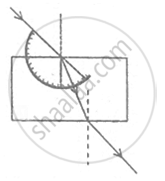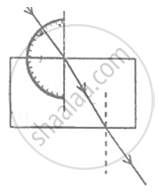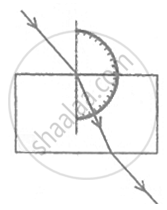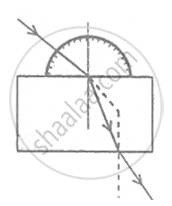Advertisements
Advertisements
प्रश्न
A concave mirror forms a real image of an object placed in front of it at a distance 30 cm, of size three times the size of object. Find (a) the focal length of mirror (b) position of image.
उत्तर
u = -30 cm
m = `"I"/"O" = 30/"O" = 3`
But, for real object m is negative
∴ m = -3
∵ m = `-"v"/"u"`
∴ `-"v"/"u" = -3`
∴ v = 3u
∴ v = 3 × -30
∴ v = -90 cm
Hence, the position of the image is 90 cm in front of the mirror.
From mirror formula,
`1/"f" = 1/"v" + 1/"u"`
∴ `1/"f" = 1/(-90) + 1/(-30)`
= `-1/90 - 1/30`
= `(-1-3)/90`
= `(-4)/90`
∴ f = -22.5 cm
APPEARS IN
संबंधित प्रश्न
A ray of light is incident normally on a plane mirror. What will be the
angle of reflection?
A small object is placed 150 mm away from a diverging lens of focal length 100 mm.
(i) Copy the figure below and draw rays to show how an image is formed by the lens.
Figure
(ii) Calculate the distance of the image from the lens by using the lens formula.
Write two more characteristics of the image.
Upto what maximum distance from the pole the image in a convex mirror can be obtained? what will be the location of object then ?
For an incident ray directed towards centre of curvature of a spherical mirror the reflected ray:
A student traces the path of a ray of light passing through a rectangular slab.
 |
 |
 |
 |
For measuring the angle of incidence, he must position the protractor in the manner shown in the figure:
In normal adjustment, for a refracting telescope, the distance between objective and eye piece is 30 cm. The focal length of the objective, when the angular magnification of the telescope is 2, will be ______.
